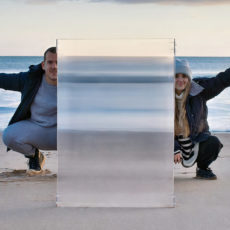
Unlike this sitting on air trick, University of Maryland’s real invisibility cloak is simpler than you think. It consists of a pullover with a stay-dry microfleece lining with adversarial patterns the evade most AI facial recognition cameras.
This demonstration showed that the pullover was able to evade the YOLOv2 detector using a pattern trained on the COCO dataset with a carefully constructed objective. How did this project start out? Facebook AI engineers wanted to test machine learning systems for vulnerabilities, and what they ended up with is the colorful print you see on this pullover. Speaking of invisibility cloaks, Vollebak is also working on their own, but in jacket form.
- Double the Fun of miniPRO or Ninebot S: This exciting drift racer can sprint from 0 to 12mph within seconds, quickly reach the max. speed of 15 MPH...
- Drift Racing Excitement: Feel the drifting excitmen
- Three driving modes suitable for different ages: Novice Mode (top speed of 5 MPH ), Standard Mode ( top speed of 10. 8 MPH ), and Sport Mode ( top...

We load images from the COCO detection dataset, and pass them through a detector. When a person is detected, and pattern is rendered over that person with random perspective, brightness, and contrast deformations. A gradient descent algorithm is then used to find the pattern that minimizes the ‘objectness scores’ (confidence in the presence of an object) for every object prior,” said the researchers.






